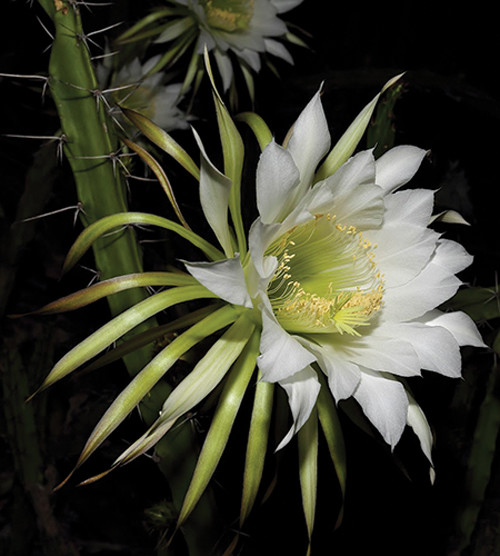 By Colleen Curran Hook, Executive Director of Quinta Mazatlan
By Colleen Curran Hook, Executive Director of Quinta Mazatlan
One night a year, the Night Blooming Cereus bursts open with beauty. Few get to witness this glorious sight as they close before the morning sun. The cacti typically bloom all at once to attract pollinators like the Sphinx Moth. They need to bloom, set fruit and have their seeds dispersed before the end of their very short blooming season.
The queen of the night is only found in desserts in southwestern US, Central and South America. In areas with large collections like Tucson, Arizona, the exquisite fragrant flowers are used in perfumery. The cactus is also popular in rock gardens and can be grown from stem cuttings. The Night Blooming Cereus has a tuberous, turnip-like root weighing 15 pounds but in some specimens, they weigh over 100 pounds. The Native Americans used the root as a food source. Wildlife like birds, tortoises and coyotes love the ripe shiny red fruit called pitaya.
As mentioned, most of the flowers bloom on the same evening, in concert. For the rest of the year the cactus looks fairly common with awkward 9-foot stems that need other plants for support and has been nicknamed the Barbed Wire Cactus. While it may take 5 years for the first flowers to bloom, the lure of the blossom is worth it. And each year the number of flowers produced will continue to grow.
The cactus wisdom for the day is when you see something beautiful in someone, tell them. It may take a second to say, but for them it could be a memory that lasts a lifetime. Let nature, nurture you! Follow Quinta Mazatlán on Facebook, Twitter, Instagram, and Youtube @QuintaMazatlan to learn more about our natural and cultural heritage in the Rio Grande Valley of South Texas.














